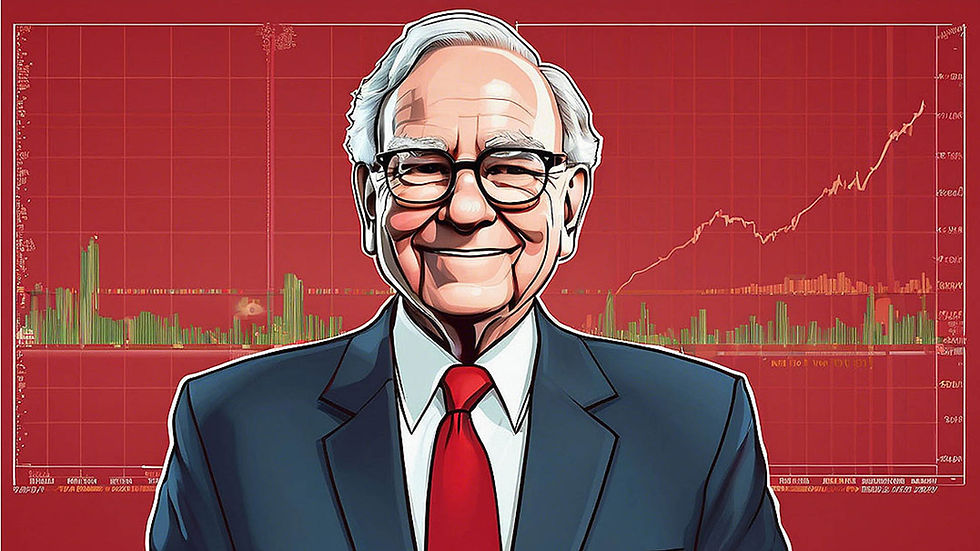Margin of Safety: How Great Value Investors Protect Capital
- Marco Bartoli
- Apr 14
- 4 min read
Updated: Jul 11
April 14, 2025 8:00 AM EDT - 4 min read
Updated April 14, 2025 8:15 AM EDT By Marco Bartoli
Founder & Principal Investment Manager of Bartoli Value Capital, a value investing firm.

In This Article
Why Do Great Value Investors Insist on a Margin of Safety?
Imagine you're skydiving. You’ve done the training, the conditions look good, and you leap out of the plane. But what really gives you peace of mind isn’t confidence in your freefall form—it’s knowing your parachute is securely packed and ready to deploy.
That parachute? That’s your margin of safety.
Great value investors insist on it for the same reason. In investing, a margin of safety means buying a stock—or any asset—well below its estimated intrinsic value. It provides an investment cushion—a way to absorb error, uncertainty, or just plain bad luck. The best investors know they won’t always be right, so they build in a valuation buffer that protects them when the unexpected happens. It’s not about predicting the future perfectly; it’s about surviving the moments when you don’t.
Benjamin Graham’s Foundational Concept
The term “margin of safety” was popularized by Benjamin Graham, the father of value investing and Warren Buffett's teacher at Columbia Business School. Graham wrote:
“The function of the margin of safety is, in essence, that of rendering unnecessary an accurate estimate of the future.”
In other words, since the future is unknowable, you must bake some protection into your investment decisions. Graham compared it to the old-fashioned idea of building a margin into your engineering specs—a principle both cautious and profoundly rational.
In his famous book The Intelligent Investor: The Definitive Book on Value Investing, Graham drove this point home: investors don’t lose money simply because a stock goes down temporarily. They lose because they bought it without an adequate cushion.
Why the Margin of Safety Still Matters Today
You might think a concept this old—first introduced in the 1930s—is no longer relevant in today’s world of AI models, high-frequency trading, and complex financial instruments.
But in truth, the margin of safety matters more than ever as a critical protection against downside risk in a world full of surprises.
We live in a world of uncertainty: global shocks, policy pivots, manias, panics, and unforeseen disruptions. Models fail. Forecasts miss. Human nature never changes.
Legendary investor Seth Klarman—who even titled his rare and revered book Margin of Safety: Risk-Averse Value Investing Strategies for the Thoughtful Investor—put it this way:
“The single most important factor in successful investing is not the return on your capital. It’s the return OF your capital.”
In other words, surviving the jump matters more than how stylish your freefall looked.
Margin of Safety in Practice: Real Examples
Let’s say you estimate that a high-quality business is worth $100 per share. If it’s trading at $95, there’s no margin of safety. One bad quarter, a change in sentiment, or a slight miscalculation could wipe out your upside—or worse.
But if you can buy that same business at $65, you’ve got a healthy valuation buffer that allows for error without wrecking your downside. Even if your valuation is off, or if the market stays irrational longer than expected, you’ve built in protection.
Here’s a real-world example:
During the financial crisis of 2008–2009, great businesses like American Express and Wells Fargo were trading at fire-sale prices. Buffett stepped in—not because he knew exactly when the storm would pass—but because the prices were so low relative to long-term value that he didn’t have to.
Margin of safety gave him the confidence to act.
The Psychology Behind Risk Avoidance
The margin of safety isn’t just a financial concept—it’s psychological armor. When you invest with a cushion, you can withstand volatility without panicking. That’s a powerful edge.
Why? Because the biggest danger to most investors isn’t market decline—it’s emotional decline. Fear causes selling. Greed causes chasing. But discipline—rooted in margin—keeps the investor steady.
Howard Marks, in his book The Most Important Thing: Uncommon Sense for the Thoughtful Investor, writes:
“Risk is not inherent in an investment; it is always a function of the price paid.”
When you overpay, risk skyrockets. When you underpay, it shrinks—even if the underlying asset doesn’t change. The price you pay determines your safety net.
Much like a parachute, the margin of safety is a financial safety net you hope you won’t need—but when gravity hits, you’re thankful it’s there.
What Happens When There’s No Margin of Safety?
History offers no shortage of cautionary tales.
Investors who bought tech stocks in 1999, real estate in 2006, or meme stocks in 2021—often did so without a margin of safety.
The result? Permanent capital loss, even if prices soared briefly.
These investors weren’t wrong about technology, housing, or retail. They were wrong about price.
Price is what you pay. Value is what you get.
But the margin of safety is what protects you when the future doesn’t unfold the way you hoped.
Final Thoughts
At Bartoli Value Capital, we don’t aim to forecast next quarter’s earnings or outsmart the market’s mood swings. We focus on building long-term wealth through timeless principles—chief among them: protecting capital first.
The margin of safety isn’t about being conservative for the sake of it. It’s about recognizing that surprises happen. That forecasts are fragile. And that enduring wealth isn’t built on heroics—but on humility.
So next time you’re analyzing an opportunity, ask yourself:
“If I’m wrong, how much can I lose? And if I’m right, is the reward worth the risk?”
That’s the essence of a margin of safety. It’s your parachute when markets fall—and one of the best tools great investors have ever used to stay in the game, and win over time.

